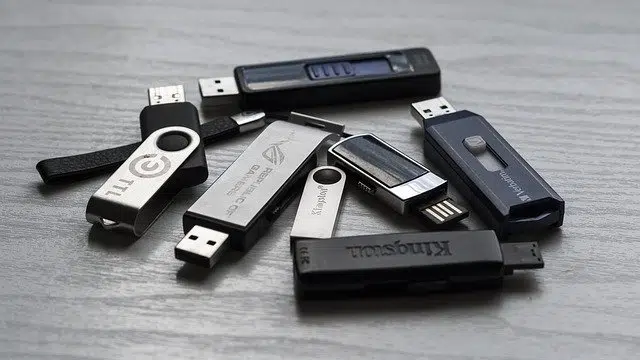
The USB memory or pendrive is a data storage device.
From the Latin disposĭtus ( "arranged" ), a device is an apparatus or mechanism that performs certain actions. Its name is linked to the fact that said artifice is ready to fulfill its objective.
For example: "They gave me an espresso coffee maker, but I still don't understand how the device works," "A specialist recommended that I install a device that regulates the intensity of the light," "This stove has a device that allows you to program the ignition time." and off."
The concept in computing
The notion of device is very popular in computing and IT , since this term is used to name peripherals and other systems linked to the operation of computers .
In this sense, a data storage device is a component that allows reading or writing digital information on a medium or support. The device therefore stores computer files logically and physically. A hard drive , DVD-ROM drive, and memory card reader are data storage devices.
In the same way, we cannot forget that a pendrive or USB memory is another of the most common memory storage devices used in the computing field. As a general rule, we can also determine that it is a plug&play type system, that is, it does not require previously carrying out what would be the installation of any type of software since it works directly when it is connected to the computer.
mobile devices
It must also be emphasized that we regularly talk about, and also use in our daily lives, what have been called mobile devices. These are technological devices that are identified because we can not only carry them with us but also because they allow us to perform actions such as communicating with other people, staying informed or even having fun.
This category includes both smart phones, the so-called smartphones, as well as laptops, PDAs or tablets, among many others. All of them have a processor, memory storage capacity, connectivity...

Among mobile devices we find smart phones or smartphones.
Specifically, mobile devices are divided into three groups:
• Improved data, which are equipped with a screen with a resolution of more than 240 x 120 pixels and which offer proposals such as a browser, SMS, email, office programs...
• Basic data. In their case, they are those that have a screen of up to 240 x 120 pixels and their features include email or a very simple browser.
• Limited data, with small screens and services such as SMS.
Other uses of the notion
A stand-alone device is known as one that has an independent power source and can therefore be active offline. In the specific field of computing, the autonomous device can function without needing to be connected to the computer (like a multifunction device).
A braille device is an electronic machine that interprets or generates braille language, whether in physical or virtual form. These devices are often used as external peripherals of a computer.
In general language, finally, a device can be the organization that is carried out to carry out an action: "The police set up a device to catch the thief inside the bank."
